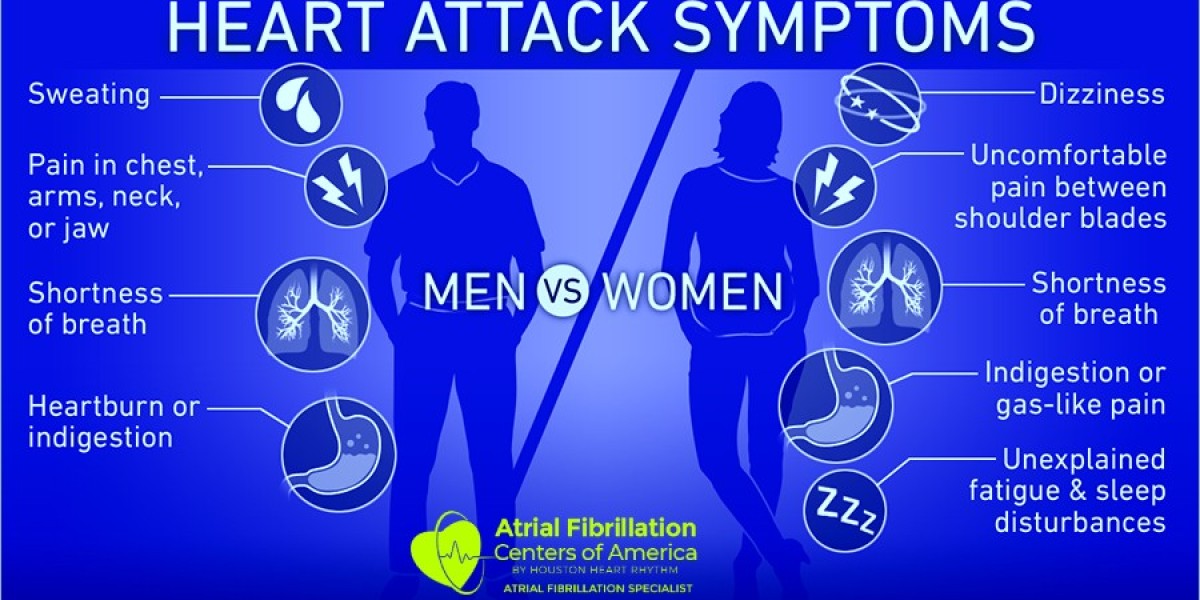That’s very right and it has been observed that the symptoms of heart attack in both men and women actually differ; being more clear & of observant nature in men while in women, these symptoms often go unnoticed due to not being so prominent most times.
It is definitely interesting to find out what might be the logic backing up this discussion. Read on this article to find out.
The reasons behind the differences in heart attack symptoms between women and men are complex and not fully understood, but a few key factors may be at play:
- Anatomical Differences – Women tend to have smaller coronary arteries than men. Plaques and blockages thus affect them differently and may cause atypical symptoms.
- Hormonal Differences – Estrogen provides some cardiac protection in women, while testosterone increases some heart risks in men. Hormone fluctuations in women as they age likely contribute to symptom variability.
- Neural Differences – There are subtle differences in the neural innervation of the heart between sexes. This may lead to divergent patterns of referred pain and sensation during an attack.
- Diagnostic Biases – Traditionally “male” symptoms are taken more seriously. This can cause women’s symptoms to be overlooked or misattributed to other causes.
- Psychosocial Factors – Women tend to have higher rates of anxiety and depression, which can mask cardiac symptoms with mental health symptoms.
- Risk Factor Prevalence – Conditions like diabetes and autoimmune disorders increase heart attack risks more in women than men. This influences symptom patterns.
In summary
While more research is still needed, it seems anatomical, hormonal, neural, diagnostic, psychosocial, and risk factor differences all weave together to create this gender divide in heart attack experiences. Understanding these nuances empowers better evaluation and care for all.
There are some additional key points to further understand the logic behind why women and men often experience different heart attack symptoms:
- Women’s Plaque Buildup Patterns – Plaque in women often distributes more widely across the smaller coronary arteries rather than clogging one major vessel. This causes diffuse narrowing and ischemia rather than complete blockage.
- Microvascular Disease – Smaller vessels and capillaries in the heart can dysfunction in women independent of plaque buildup. This also produces atypical ischemic patterns.
- Comorbid Conditions – Conditions more common in women like migraines, autoimmune disorders, and depression may independently or synergistically produce some overlapping symptoms.
- Pregnancy Complications – Women with preeclampsia, peripartum cardiomyopathy, or other pregnancy-related cardiac insults may have unique scar tissue and remodeling that alters symptom patterns.
- Vagal Response – Some research indicates women have a heightened vagal (parasympathetic) nerve response compared to men which may protect the heart but also contribute to dizziness and nausea.
- Communication Styles – Socialized patterns of communication can lead some women to describe their symptoms more vaguely compared to men. This obfuscates diagnosis.
- Research Biases – Many cardiovascular studies historically only included men. This skewed understanding of symptoms away from women’s experiences.
It is a mosaic of anatomical, hormonal, neurological, immunological, physiological, social, and research-related factors that contribute to making women’s “heart songs” so different from men’s during a cardiac crisis. Continuing to uncover this logic will help save women’s lives.
It is very very important for women to be more aware as these unnoticeable symptoms can become fatal for them.
Women's Heart Attack Symptoms
Here are some tips for how women can become more aware of potential heart attack symptoms to avoid missing the signs of a serious cardiac event:
- Educate yourself on the full range of heart attack symptoms in women – beyond just chest pain. These include jaw/neck/back pain, fatigue, shortness of breath, nausea, dizziness, and cold sweats.
- Know Your Personal Risk Factors – family history, high blood pressure, diabetes, smoking, etc. If you have risks, be extra vigilant about symptoms.
- Pay Attention to Vague or Unexplained Symptoms – don’t brush them off as just stress, flu, acid reflux, aging, etc. Ask – could this be my heart?
- Notice Patterns and Changes – example, if your fatigue is getting progressively worse or pain comes and goes. Changing or worsening symptoms are red flags.
- Track Symptoms – write down when you experience unusual symptoms so you can give your doctor an accurate history.
- Speak up and advocate for yourself with healthcare providers if your concerns are dismissed. Push for appropriate testing.
- Get Annual Check-ups – This allows early detection of cardiovascular issues before an emergency.
- Learn CPR – this empowers you to provide lifesaving care if someone has a heart attack.
- Tuning into your body’s signals, knowing your risks, speaking up about atypical symptoms, and seeking preventative screenings gives you the best chance of detecting a serious heart problem before it’s too late. Trust your instincts if something feels “off” – it very well may be your heart talking.
KEY TAKEAWAY
When it comes to heart health, knowledge truly is power. By understanding that their heart attack symptoms often differ from men’s, women can tune into their bodies more attentively. They can pick up on subtle clues like fatigue, back pain, and nausea that signal an urgent cardiac crisis. Armed with information on their risks and atypical signs, women can advocate for themselves to get the proper diagnostic tests and lifesaving care without dangerous delays.
Ongoing research and education will shed more light on the myriad reasons women’s “heart songs” follow a distinct melody. But the time to act is now. All women must be alert to the uncommon refrain that heralds a female heart attack. By listening closely to the unique rhythms of the female heart, we can ensure a harmonious beat that continues for years to come. Stay informed, speak up, and trust your heart – it’s calling out to you in its own special language. With attentive ears and prompt care, we can conduct a healthier future for women’s cardiac well-being.








